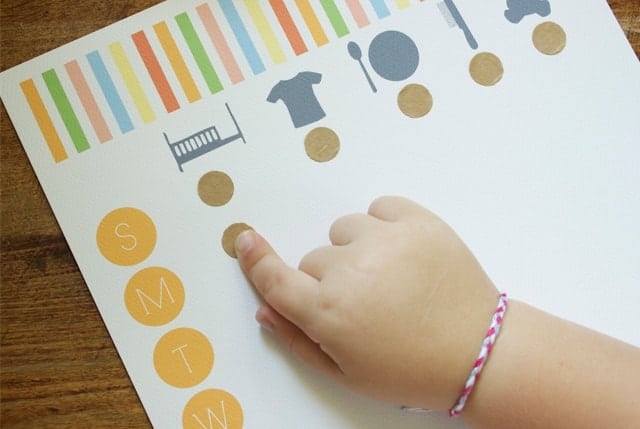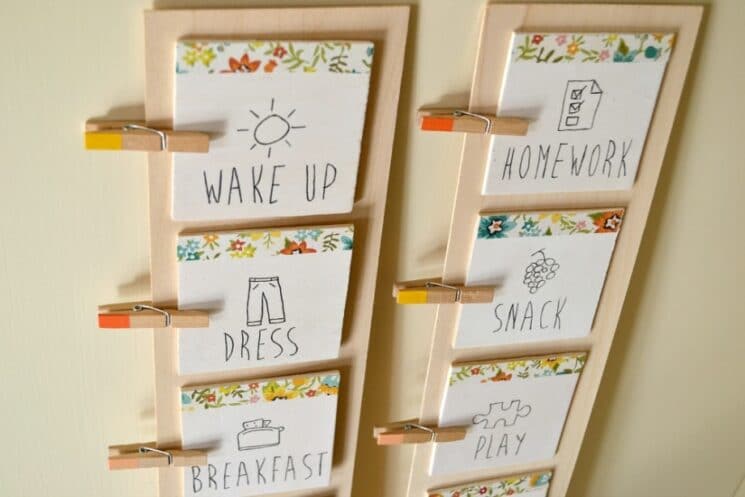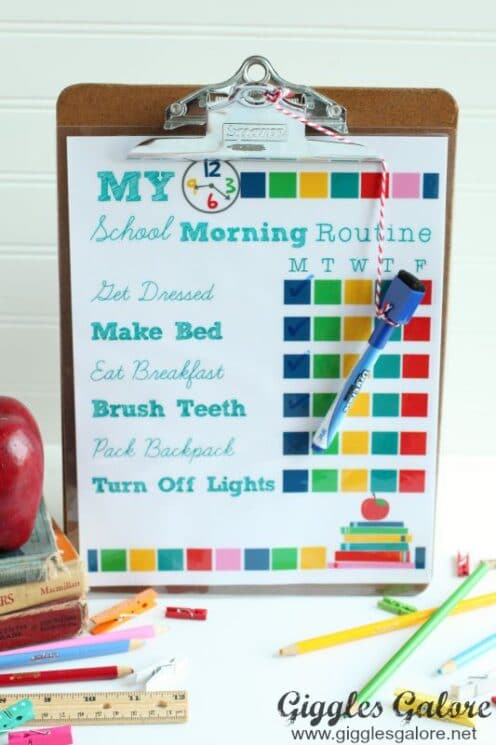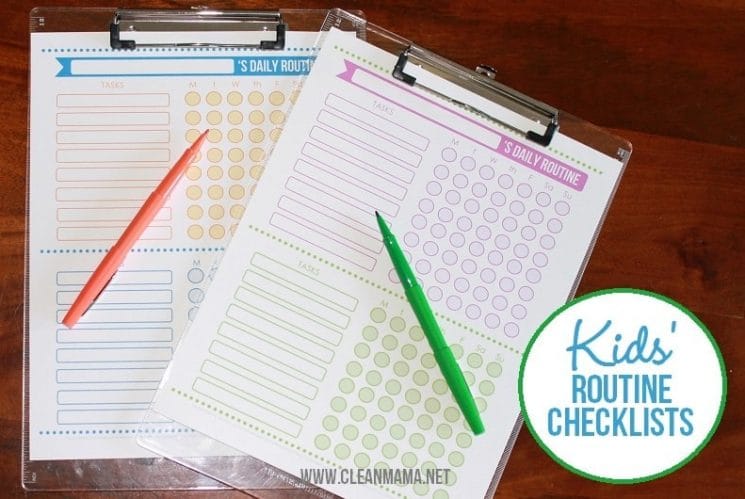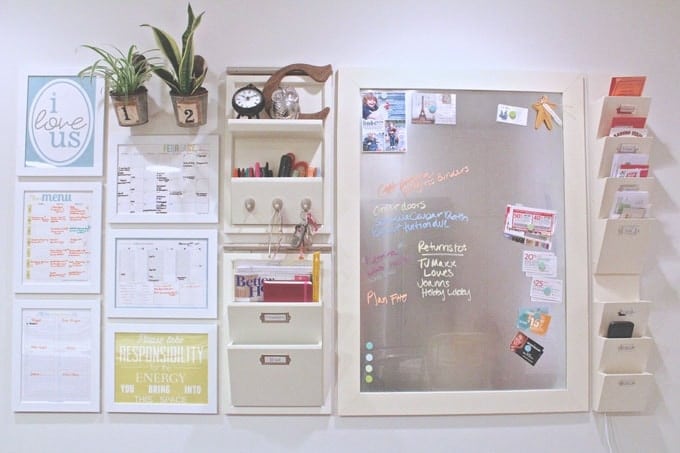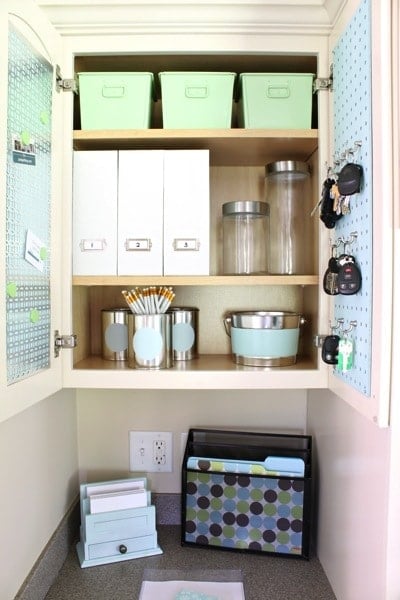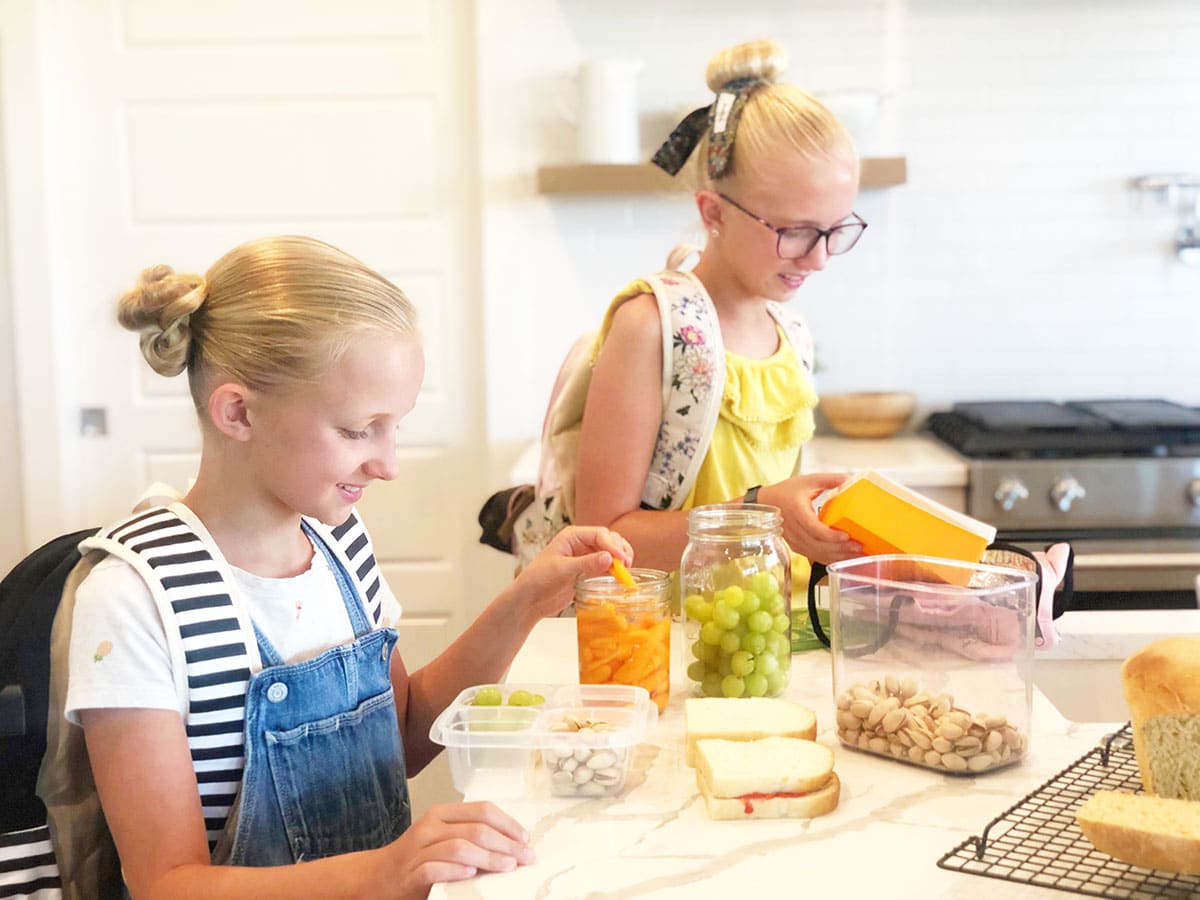
With planning, practice, and patience, you can nail down a school morning routine that prepares everyone in the family to take on the day. Whether you are getting your littles off to elementary or teens to highschool, a good morning routine helps the entire family start off feeling good!

Sometimes it feels like as soon as your feet hit the floor in the morning, the craziness begins. Getting the entire family ready for school and getting to where you need to be on time can be quite a challenge. Keep reading for our best tips to create a school morning routine that encourages both positivity and productivity in the early morning.
Tactical Routine Tips
1. Get Ready the Night Before
I think this might be the number one thing to a successful school morning. The more you can get done the night before, the better your morning will be.
- Pack lunches the night before. I read something that I think is pretty great. Two lunch rules: Rule #1: Kids make their own lunches. Rule #2: If the lunches aren’t made by 7AM, you buy lunch that day. I love these rules because my kids are motivated by the thought of having to get school lunch. My job is to provide a gentle reminder, and healthy food; the rest is up to them.
- Pick clothes out the night before or for the entire week! On laundry folding day, you can set aside clothes for each school day of the week. This makes life so much easier because there is no arguing about what to wear or wasting time looking for socks. The kids already know what to put on for each day. You can even have an “Express Yourself” day where the kids can pick out their own outfit for the day. You want to wear a tutu with rainboots… great! Plaid shorts and a striped shirt? Go for it! …but you have to wait for Express Yourself day.
- Make a breakfast plan that fuels your kids. Instead of getting up and asking your kids what they want for breakfast, or trying to think of something yourself – have a plan! This can look different for everyone, but here are a few ways to do it.
- Make a breakfast rotation schedule and assign everyday to a different type of food. This is a great one.
- Subscribe to a meal plan that plans your meals for you. We love the Family Fresh Meal Plan on Prepear. This plan has 7 breakfasts already planned for you!
- Do some meal prep and have breakfasts already made that you can grab and go, or heat quickly. These are some ideas:
- Organize backpacks, homework and other school supplies the night before so they are ready to go in the morning. No more lost homework, or rushing around trying to find their favorite school pencil! Here are a few organization tips that might help.
- Give each of your kids an ‘inbox’ with homework or things they need to work on that day and return to school the next day. This hanging folder organizer works really well for that. We like this paper organizer also if you have counter or desk space. This over the door organizer is great for saving counter space.
2. Set Sleep Goals
When my kids are well rested, everything seems to go better. But especially our mornings. They wake up refreshed and happy instead of tired, groggy and grumpy with a capital G!
These are some great tips to establish healthy sleeping habits:
- Get enough sleep: Kids ages 6 to 13 need 9 to 11 hours of sleep each day while teens aged 14 to 17 need 8 to 10 hours of sleep each day. Work backward from the alarm time to make sure everyone is getting the proper amount of Z’s.
- Stick to a regular schedule: Try to keep your kids on consistent daytime and nighttime schedules to help regulate sleep. Be sure to keep this up on the weekends, too!
- Stay consistent with your routine: Help your child fall asleep by building a relaxing bedtime routine free of electronics or TV. Reading books or journaling together can be great bedtime activities.
- Set the mood for sleep: Create an ideal sleep environment by regulating the temperature and light levels of your child’s room. Test out noise machines or fans to help them fall asleep and stay asleep.
- Don’t use technology before bed. Screen time before bed is a major cause of poor sleep for families. The use of electronics too close to bedtime can lead to difficulty falling and staying asleep. Blue light emitted from electronic devices engages the prefrontal cortex of the brain. This part of the brain needs to be quiet in order for us to fall asleep. Shutting off screens at least 60 minutes before bedtime is a great rule to implement for the entire family. Choose a paper book instead of an e-book or play a game together as a family as opposed to allowing children to play games on electronic devices prior to sleep.
3. Routine Charts
Every child has different capabilities, needs and routines in the morning. I have found that having a chart for kids to follow really helps them be more responsible to get their stuff done (even older kids!) The bonus for me is that I don’t feel like I have to nag them all morning! There are a lot of different ways to do a morning chart and these are some great ones for different ages.
Preschool and Kindergarten Ages
I love this chart with pictures and simple stickers that kids easily stick on to show it has been completed. You can laminate it and reuse every week. (Click here to get it)
This is a SUPER cute and visually appealing way to have a basic routine chart for your younger kids. You can move the blocks around as they finish. And you can completely customize it or use the template she provides in the post. (Click here for instructions)
1st – 5th Grade
Sometimes you just need something non-complicated to get it done in the morning. This is a simple and really cute checklist for younger elementary age kids. (Click here to get it)
I like this one because there is space to add additional items if you need to. (Click here to get it)
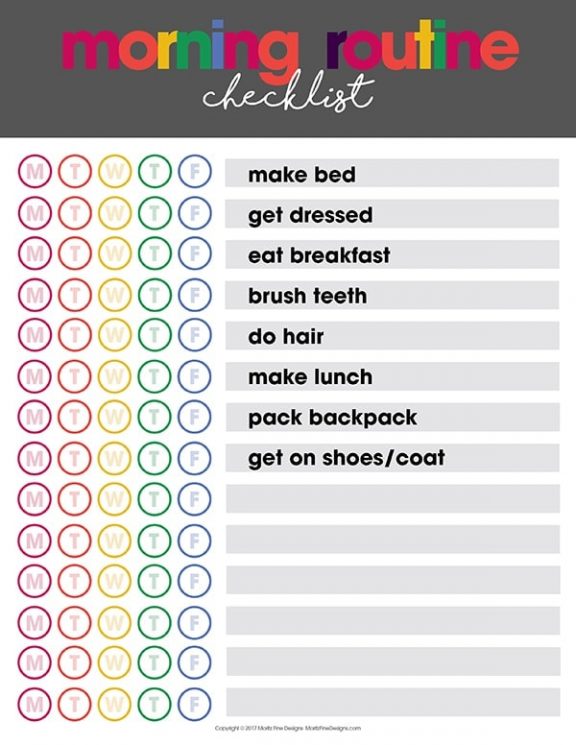
6th-9th Grade
I like this customizable chart for older kids because then they can feel like they are a part of choosing their morning routine. Also you can change their tasks if needed throughout the year.
High school Age
Even high school age kids need a little direction and organization in the mornings. Sometimes just a simple checklist is all they need. (Click here to get)
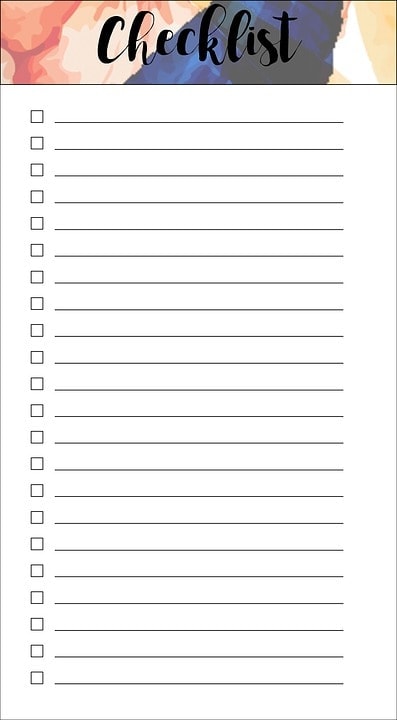
4. Create a Schedule Calendar
We have a paper calendar that hangs in our house so that everyone in the family knows what activities are going on that week. Once a week we sit down as a family and talk about the schedule so we are on the same page. Each kid has a different color on the calendar which makes it easy for them to spot their own activities every morning before leaving the house so they know what to expect after school. These are some good ones on Amazon:
Wall Calendar for smaller spaces
5. Add Some Fun
Sometimes it’s hard to wake up and get going in the morning. By adding in a few fun things, it can make the morning rush a lot more enjoyable! You can set the tone for the rest of the day by making sure everyone gets up to a positive atmosphere.
Tips for a positive morning routine:
- Play some music: Take requests and create a family playlist to boost the morning mood (dance moves always encouraged).
- Exchange positive words: Ask your child what they’re looking forward to each day and share yours as well — no matter how small.
- Connect: Hug, hold hands, or give your child verbal praise to show them affection.
6. Create a Command Center for Often Use Items
A command center is a central place where you can organize and store important things your family uses often and also a place to keep important information that everyone in the family needs to know.
Command Center Ideas
I like the magnet board and all of the hanging places to store things. Check it out here.
I like how this command center uses a cabinet to keep everything organized and hidden away when needed. Check it out here.
I like that this one is all on one board keeping everything together in one spot. Check it out here.
Drawer in your Kitchen for Commonly Used Items
I have a drawer with items that we always need in the morning but don’t want to run back upstairs to get. I keep it organized with my favorite Sterilite Container. I got the idea from Tara Thueson a few years back and it has worked so good for my kids!
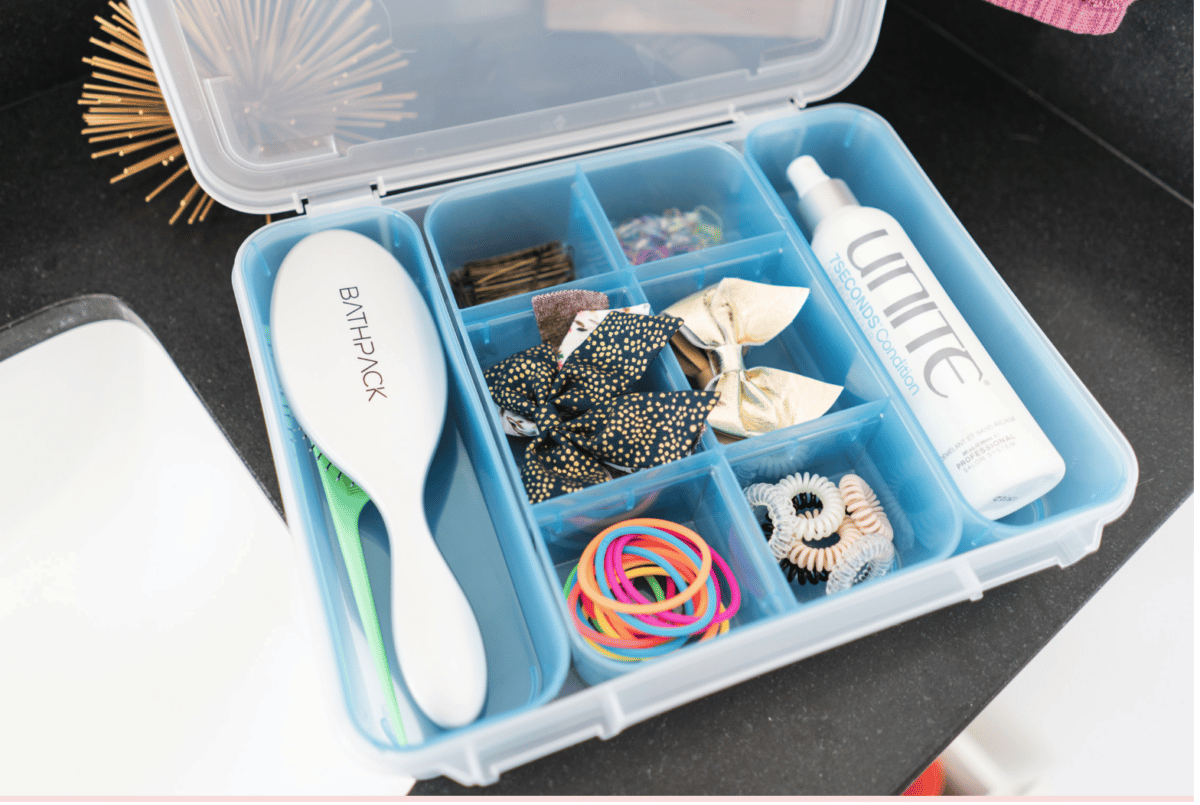
7. Offer Small Rewards for Getting It All Done
Rewards are great and effective. I prefer to have the reward be about an activity, a privilege, or an experience together (rather than buying my kids something). The reward can be as simple: if there is extra time in the morning, then your kids can read their favorite book, or play with toys before they have to go.
Or maybe the reward is a little bigger if you rock it all week and get out of the house on time (and with a good attitude!). The reward could be going to the park for a while and then staying up late on Friday night for a movie. Playground time, staying up late and extra screen time?! Yes please!
Emotional Routine Tips
I’m a big believer in starting the day off with positive and motivating thinking. I find that positive affirmations are a great way to build self-esteem and start the day on the right track. Sometimes kids have anxiety or fears of something they have to face that day. By repeating these positive affirmations everyday, they can feel more happy, and more empowered to face whatever they need to that day. Some examples are:
- I’m strong. I’m capable. And I can do anything I put my mind to.
- I am friendly.
- I have fears, but I have the courage to face them.
- I am a loving and kind sibling.
- My friends enjoy playing with me.
- My parents are proud of me.
- My family, friends, and teachers love me for who I am.
- I am helpful.
2. Take a Few Minutes to Connect
If you are able to connect with your kids right away, they are much more likely to listen and follow directions in the morning. This doesn’t have to take long and it can look like:
- Giving your child a long hug right when they wake up
- Share a few deep breaths together
- Hold hands while walking down the stairs
- Make eye contact while sincerely listening to your child
- Create a positive morning playlist with your child and enjoy listening to it together while you get ready for the day
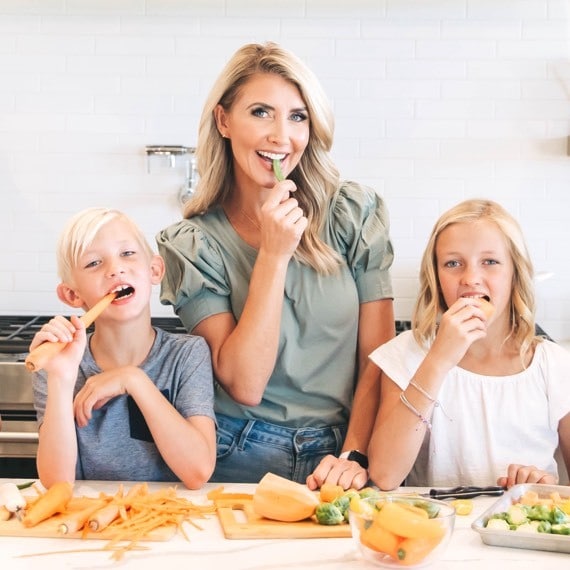
Natalie Monson
I’m a registered dietitian, mom of 4, avid lover of food and strong promoter of healthy habits. Here you will find lots of delicious recipes full of fruits and veggies, tips for getting your kids to eat better and become intuitive eaters and lots of resources for feeding your family.
